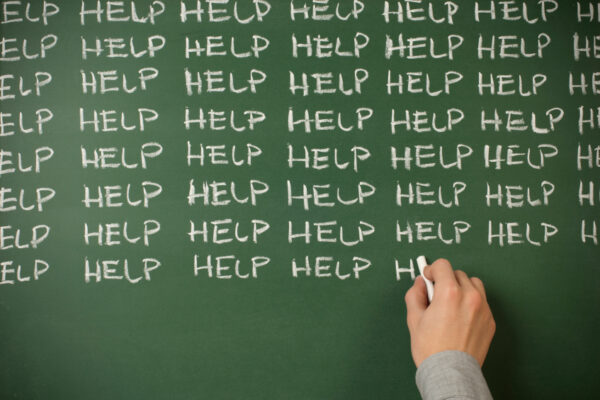Texas students, teachers and staffers will return to the classroom during the next few weeks after a year that many spent teaching and learning from home. But now, COVID-19 infection rates are skyrocketing and debate is raging about how best to keep everyone safe at school, when mask mandates, vaccine requirements and even asking about vaccination status are all forbidden. Many are anxious about staying healthy.
These are critical conversations. But alongside our concerns for the future, we should recognize that returning to school will stir up the past. In our classrooms, we may meet not just our new classmates, but a rush of feelings about all that we have suffered since March 2020. We need to make room for those feelings as part of Back to School 2021.
When teachers meet our students, let’s mention our feelings about returning to school when we introduce ourselves. Administrators can lead the way with age-appropriate guidelines for helping people process their emotions. And parents can ask their kids what’s on their minds as they get ready for the new school year.
When we return to something like “normal” school, we may be ambushed by grief for all that we lost during the long months when we could not go to school together.
During the past year and a half, we have lost people. We may find empty offices and vacant chairs that belong to those who have passed away, lost their homes, or become disabled. Those losses may feel real for the first time when we return to the place where those people used to be and find only silence.
We have also lost educational ground, especially kids who were behind to begin with. Teachers worked tirelessly to offer a good learning experience for their students, only to feel at the end that it had been inadequate and that students had suffered. Students and parents struggled to access remote teaching materials, but without the in-person support of teachers and peers, comprehension and motivation languished.
And we have lost one another. One of the most deeply mourned casualties of remote teaching has been the companionship of the classroom. The presence of other people inspires us to do our best in a way that a Zoom screen cannot. We rely on one another to help us understand the material we are studying together, to inspire us to keep trying when we are discouraged, and to celebrate our success when we master something new.
No matter how successful we are this year in fostering high-quality face-to-face learning, in getting more people vaccinated to make school as safe as it can be, and in spending time together to catch up on what we have missed, the losses of the past year cannot be erased. And when we return to school, expecting to be the same people we were when we last attended “normal” school, we may find ourselves overwhelmed by feelings we did not even know we had.
We are more than ready to be done with the pandemic. We want to dump our masks, go back to regular life and forget the whole thing. But sorrow does not work like that. Sadness that we don’t talk about doesn’t go away. It festers beneath the surface and hobbles our strides toward the normalcy that we all desperately crave. Our path back to normal lies not away from the sadness of the past year, but through it.
I am a university professor, and I might cry the first time I reenter a classroom full of students. If I do, I will talk with them about the joy, the grief and the loss that causes my tears. I will invite the students to share their own feelings about returning to in-person classes. We will learn, together, and be better for it.
This year more than ever, our feelings need a seat in the classroom.
Deborah Beck is an associate professor of classics at The University of Texas at Austin.
A version of this op-ed appeared in the Houston Chronicle, Austin American-Statesman, San Antonio Express News, Amarillo Globe News, Lubbock Avalanche-Journal, and MSN.




